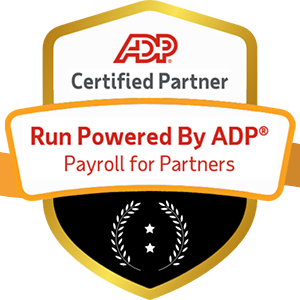
The Reality Check: Financial stress affects 54% of workers and costs employers an estimated $250 billion annually in lost productivity. On-demand pay offers a solution that reduces employee financial anxiety while delivering measurable business benefits including 27% lower turnover and 18% higher productivity scores.
American workers face an unprecedented financial wellness crisis that extends far beyond individual bank accounts into corporate boardrooms. Despite steady employment rates and economic growth, millions of employees struggle with cash flow challenges that traditional bi-weekly pay cycles often exacerbate rather than solve.
The numbers paint a stark picture of workplace financial stress. PwC's latest Employee Financial Wellness Survey reveals that 54% of workers report being stressed about their finances, with 28% describing themselves as highly stressed. This anxiety doesn't stay at home—it follows employees into the office, where financial worries become productivity killers and engagement dampeners.
The traditional payroll model, designed for an era when most families had single breadwinners and predictable expenses, no longer matches the reality of modern financial life. Gig economy participation, irregular expenses, and the decline of financial safety nets create cash flow mismatches that rigid payment schedules can't address effectively.
Forward-thinking organizations recognize that employee financial wellness directly impacts business performance. Companies that address these challenges through innovative solutions like on-demand pay see measurable improvements in retention, productivity, and overall workplace satisfaction.

On-demand pay, also known as earned wage access (EWA), represents a fundamental shift in how organizations think about compensation delivery. Rather than forcing employees to wait for predetermined pay dates, this approach allows workers to access portions of their already-earned wages when they need them most.
The concept rests on a simple principle: if someone has worked and earned money, they should have reasonable access to those earnings without waiting weeks for the next pay cycle. This isn't an advance or loan—it's access to compensation already earned through completed work hours.
Modern on-demand pay platforms integrate seamlessly with existing payroll and time-tracking systems, calculating available wages in real-time based on hours worked, applicable deductions, and tax withholdings. Employees can typically access between 25% to 50% of their accrued earnings, with exact amounts varying by employer policy and platform capabilities.
The delivery mechanisms have evolved considerably from early offerings. While some platforms still use prepaid cards, most now offer direct deposit options, mobile wallet transfers, and even cryptocurrency payments in some cases. The focus has shifted from simply providing access to creating comprehensive financial wellness experiences.
The most immediate impact of on-demand pay appears in employees' daily financial management capabilities. Workers no longer need to choose between paying rent on time and covering an unexpected car repair—they can access their earned wages to handle both situations without resorting to high-cost alternatives.
Financial anxiety creates a cascade of negative effects that extend far beyond money management. Workers dealing with cash flow stress report higher rates of sleep disruption, relationship conflicts, and physical health problems. On-demand pay interrupts this cycle by providing a safety valve that reduces the intensity of financial emergencies.
Research conducted by the Financial Health Network shows that employees with access to earned wage advance services report 32% lower financial stress levels compared to those relying solely on traditional pay schedules. This stress reduction translates into improved focus at work, better decision-making capabilities, and enhanced overall life satisfaction.
Perhaps nowhere is on-demand pay's impact more pronounced than in reducing reliance on predatory lending options. Payday loans, with their typical 400% annual percentage rates, trap millions of Americans in debt cycles that can persist for months or years.
Bank overdraft fees represent another significant burden, with the average cost per incident reaching $35 and many workers facing multiple overdrafts per month during tight periods. On-demand pay eliminates many situations that trigger these fees while providing a more affordable alternative to short-term credit needs.
Credit card dependency for basic expenses creates long-term financial problems as workers accumulate high-interest debt for necessities rather than discretionary purchases. Access to earned wages helps employees maintain healthier credit utilization ratios while preserving credit availability for genuine emergencies or planned purchases.
On-demand pay shifts financial control back to employees, enabling more strategic money management approaches. Rather than being forced to receive large sums bi-weekly, workers can access smaller amounts as needed, making budgeting more manageable and reducing the temptation to overspend immediately after payday.
This granular control supports better financial habits. Employees can pay bills when they're due rather than waiting for pay dates, maintain more consistent account balances, and develop spending patterns that align with their actual needs rather than arbitrary payment schedules.
Many platforms complement wage access with financial education resources, budgeting tools, and spending insights that help employees develop stronger money management skills over time. This educational component amplifies the benefits of wage access by building long-term financial capabilities.

While employee benefits drive initial interest in on-demand pay, the measurable business advantages often justify continued investment and expansion of these programs.
Financial stress significantly impairs cognitive function, particularly in areas like working memory, attention control, and decision-making. Employees worried about making rent or covering medical bills struggle to focus fully on work responsibilities, leading to decreased productivity and increased error rates.
Organizations implementing on-demand pay report notable improvements in productivity metrics. A study by Visa found that employees with wage access options showed 18% higher productivity scores and 21% better engagement ratings compared to control groups without such access.
The reduction in personal financial crises also decreases workplace disruptions. Employees spend less time during work hours dealing with bank overdrafts, loan applications, or family financial emergencies when they have tools to prevent these situations from escalating.
In competitive labor markets, innovative benefits can differentiate employers from competitors offering similar compensation packages. On-demand pay appeals particularly strongly to younger workers and those in hourly positions where cash flow challenges are most acute.
Turnover reduction represents one of the most measurable benefits of on-demand pay implementation. DailyPay, a leading platform provider, reports that clients see average turnover reductions of 27% after implementing wage access programs. Given that replacing an hourly worker costs an average of $3,500, these retention improvements generate substantial cost savings.
The recruitment advantages extend beyond direct cost savings. Companies offering on-demand pay often find their job postings generate more applications and attract higher-quality candidates who view wage access as an indicator of progressive, employee-focused management.
Modern on-demand pay platforms handle most administrative tasks automatically, reducing HR burden while providing employees with 24/7 access to their benefits. Integration with existing payroll systems means minimal disruption to established processes while adding significant employee value.
Healthcare cost implications represent a longer-term benefit that's becoming increasingly measurable. Financial stress correlates strongly with various health problems including anxiety, depression, cardiovascular issues, and diabetes complications. By addressing financial stress proactively, employers may see reductions in healthcare utilization and associated costs.
Absenteeism decreases when employees have better financial stability. Workers no longer need to miss shifts to deal with financial emergencies, visit payday loan offices during business hours, or take time off due to stress-related health problems.
Successfully launching on-demand pay requires careful planning that addresses both technical integration and employee adoption challenges.
Modern platforms offer APIs that integrate with most major payroll systems including ADP, Workday, Paychex, and others. The integration typically requires one-time setup to establish data flows for hours worked, pay rates, and deduction calculations.
Security considerations are paramount given the sensitive financial data involved. Leading platforms maintain SOC 2 compliance, encrypt all data transmissions, and implement multi-factor authentication for employee access. Regular security audits and penetration testing help ensure ongoing protection of employee information.
Real-time calculation accuracy depends on timely data synchronization between time-tracking systems and the wage access platform. Employers should establish clear protocols for handling scheduling changes, overtime calculations, and other variables that affect available wage amounts.
Successful programs combine technology deployment with comprehensive employee education about responsible usage. Many workers initially worry that accessing wages early might somehow disadvantage them or complicate their financial situation.
Communication strategies should emphasize that on-demand pay accesses already-earned wages rather than providing advances or loans. Clear explanations of fees, limits, and how the service integrates with regular payroll help build employee confidence and encourage appropriate usage.
Financial literacy components enhance the value of wage access by helping employees develop better overall money management skills. Partnerships with financial education providers can offer budgeting workshops, debt management counseling, and retirement planning resources that complement wage access capabilities.
Employers can choose between several funding and fee approaches depending on their objectives and budget constraints. Some organizations absorb all costs as an employee benefit, while others implement modest per-transaction fees that employees pay directly.
Funding models include employer-funded programs where the company provides immediate wage access and recovers amounts from future payroll, and third-party funded models where external providers advance wages and collect repayment directly from employers.
Fee structures vary significantly across providers, ranging from flat per-transaction fees ($1-5) to percentage-based charges (1-5% of accessed amount). Some platforms offer subscription models that provide unlimited access for monthly fees, while others combine multiple fee types based on usage patterns.
Despite clear benefits, some organizations hesitate to implement on-demand pay due to perceived risks or administrative complexity.
Cost concerns often focus on direct fees and potential administrative burden, but comprehensive analysis usually reveals positive ROI through reduced turnover, improved productivity, and decreased absenteeism. Organizations should model these indirect benefits alongside direct costs when evaluating program viability.
Cash flow impacts are typically minimal since most programs operate on advance-and-recover cycles that net out within regular pay periods. Third-party funded models eliminate even these temporary cash flow effects by having external providers handle wage advances.
Budget planning should account for both direct program costs and potential savings from reduced turnover, improved productivity, and decreased use of other employee assistance programs that address financial emergencies.
Wage and hour law compliance varies by jurisdiction, with some states having specific regulations governing earned wage access programs. Employers should consult legal counsel to ensure program structures comply with applicable laws and regulations.
Tax implications require careful consideration, particularly regarding the timing of withholdings and reporting requirements. Most platforms handle these complexities automatically, but employers should verify that their chosen solution maintains compliance with federal and state tax obligations.
Record-keeping requirements may be more complex with on-demand pay systems, requiring integration between wage access records and traditional payroll documentation for audit and compliance purposes.
Some managers worry that on-demand pay might encourage poor financial planning or create dependency on frequent wage access. However, research consistently shows that most employees use these services responsibly, typically accessing wages only during genuine emergencies or cash flow gaps.
Communication strategies should frame on-demand pay as a financial wellness tool rather than an emergency measure, emphasizing how it supports better financial planning rather than replacing it. Success stories from early adopters help build organizational confidence in the program.
Training for managers and HR staff ensures consistent messaging and proper support for employees who have questions about the service. Clear policies about appropriate usage and available support resources help maintain program integrity.
Real-world implementations provide valuable insights into best practices and common challenges organizations face when deploying on-demand pay solutions.
Walmart's partnership with multiple wage access providers serves over 1.4 million employees and has generated significant insights into large-scale deployment challenges. Their experience highlights the importance of offering multiple access options and maintaining competitive fee structures to maximize employee adoption.
The company reports that employees using wage access services show higher retention rates and improved financial stability metrics. Particularly notable is the reduced reliance on traditional employee assistance programs for financial emergencies, suggesting that wage access prevents problems rather than simply addressing them after they occur.
Target's implementation focused heavily on employee education and financial literacy, combining wage access with comprehensive financial wellness programming. Their approach demonstrates how wage access can serve as an entry point for broader financial education initiatives.
Uber's Instant Pay program allows drivers to access earnings up to five times daily, addressing the unique cash flow needs of gig workers who may need frequent access to earnings for vehicle maintenance, fuel, and personal expenses.
The program's success has influenced other gig economy platforms to offer similar services, recognizing that income volatility represents one of the primary challenges facing independent contractors. Real-time or near-real-time access to earnings helps gig workers manage the irregular income patterns inherent in this work model.
DoorDash and Lyft have implemented variations that account for the specific needs of their driver networks, including integration with vehicle maintenance programs and fuel discount services that help drivers optimize their earnings.
Healthcare organizations face unique challenges including shift differentials, on-call payments, and complex benefit structures that can complicate wage access calculations. Several major health systems have successfully implemented programs that account for these complexities while providing meaningful financial benefits to staff.
The nursing shortage has made retention particularly critical in healthcare, and wage access programs have shown measurable impact on turnover rates among nursing staff and other clinical personnel. Given the high cost of recruiting and training healthcare workers, even modest retention improvements generate substantial ROI.
24/7 operations in healthcare settings align well with on-demand pay capabilities, allowing staff to access wages regardless of traditional business hours or administrative availability.

The on-demand pay landscape continues evolving rapidly, with new technologies and approaches expanding capabilities while improving user experiences.
Artificial intelligence applications are enhancing wage access platforms by providing personalized financial insights, predicting cash flow needs, and recommending optimal timing for wage access based on individual spending patterns and upcoming expenses.
Blockchain technology may eventually enable more secure and transparent wage access systems while reducing transaction costs and processing times. Smart contracts could automate complex payroll calculations and provide immutable records of wage access transactions.
Integration with banking and financial services platforms creates opportunities for comprehensive financial wellness ecosystems that combine wage access with savings programs, credit building services, and investment opportunities.
State and federal regulators continue developing frameworks for earned wage access services, with recent guidance from agencies like the Consumer Financial Protection Bureau providing clearer compliance pathways while maintaining consumer protections.
The trend toward viewing wage access as a employee benefit rather than a lending product has important implications for regulatory treatment and fee structures. This classification affects everything from licensing requirements to disclosure obligations.
International markets are beginning to adopt similar regulatory approaches, creating opportunities for global organizations to implement consistent wage access programs across multiple jurisdictions.
Integration with broader HR technology ecosystems enables more sophisticated applications that combine wage access with performance management, scheduling optimization, and employee development programs.
Industry-specific solutions are emerging for sectors like construction, hospitality, and retail that have unique payroll complexities or workforce characteristics. These specialized platforms offer features tailored to specific industry needs while maintaining core wage access functionality.
Small and medium business adoption is accelerating as platform providers develop solutions that work for organizations without sophisticated HR technology infrastructure. Simplified onboarding and reduced minimum requirements are making wage access accessible to smaller employers.
Organizations considering on-demand pay should follow a structured approach that ensures successful deployment while maximizing employee and business benefits.
Begin with comprehensive analysis of current employee financial wellness challenges, including survey data about financial stress levels, usage of high-cost credit options, and interest in wage access services. This baseline assessment helps justify program investment while establishing success metrics.
Evaluate existing payroll and HR technology infrastructure to identify integration requirements and potential challenges. Most modern systems support wage access integration, but legacy systems may require updates or workarounds.
Develop clear program objectives that align with broader HR and business strategies. Whether focusing on retention, recruitment, productivity, or employee satisfaction, specific goals help guide vendor selection and program design decisions.
Compare platform providers based on integration capabilities, fee structures, security features, and additional financial wellness services. The cheapest option isn't always the best value when considering user experience, reliability, and support quality.
Negotiate contract terms that protect both employer and employee interests while maintaining flexibility for program modifications as needs evolve. Pay particular attention to data ownership, liability allocation, and termination procedures.
Pilot programs with limited employee groups can help identify implementation challenges and refine processes before full-scale deployment. These pilots also generate usage data and feedback that inform broader rollout strategies.
Comprehensive employee communication campaigns should begin weeks before program launch, explaining benefits, addressing concerns, and providing clear instructions for enrollment and usage. Multi-channel communication ensures message reach across diverse workforce segments.
Training for HR staff and managers ensures consistent support for employee questions and concerns during the initial adoption period. Clear escalation procedures help address complex situations while maintaining positive employee experiences.
Ongoing monitoring of usage patterns, employee feedback, and business impact metrics enables continuous program optimization. Regular reviews help identify opportunities for expansion or enhancement while addressing any emerging challenges.
Effective measurement systems track both quantitative metrics and qualitative indicators that demonstrate program value to employees and employers.
Direct cost analysis includes platform fees, integration costs, and administrative time while calculating savings from reduced turnover, improved productivity, and decreased use of other employee assistance programs.
Turnover analysis should compare pre- and post-implementation rates while controlling for other variables that might influence retention. Focus particularly on voluntary turnover among high-performing employees where replacement costs are highest.
Productivity measurements can include both objective metrics like output per hour and subjective assessments like manager ratings of employee focus and engagement. Financial stress reduction often shows up in improved work quality before quantity changes become apparent.
Regular surveys should track financial stress levels, job satisfaction, and perceptions of employer support for financial wellness. These subjective measures often predict future retention and engagement changes before they appear in hard metrics.
Usage analytics provide insights into employee adoption patterns, helping identify which workforce segments benefit most from wage access while revealing opportunities for enhanced financial education or support services.
Net Promoter Score measurements can reveal whether employees would recommend the employer to others, with wage access often contributing to positive employer brand perceptions that support recruitment efforts.
On-demand pay represents more than a payroll innovation—it's a strategic response to fundamental changes in how people work and manage their financial lives. Organizations that embrace this approach position themselves as progressive employers while addressing real employee needs that traditional benefit structures often overlook.
The business case for on-demand pay continues strengthening as implementation costs decrease and benefits become more measurable. Early adopters have demonstrated that wage access programs deliver meaningful ROI through improved retention, enhanced productivity, and reduced administrative burden related to financial emergencies.
However, success requires more than simply implementing technology. The most effective programs combine wage access with broader financial wellness initiatives that help employees develop better money management skills while providing safety nets for unavoidable financial challenges.
As the labor market continues evolving and employee expectations shift toward more flexible, responsive employment relationships, on-demand pay will likely become a standard rather than innovative benefit. Organizations that move early in this transition gain competitive advantages while building stronger relationships with their workforce.
The future of payroll lies in systems that adapt to employee needs rather than forcing employees to adapt to rigid payment schedules. On-demand pay represents a significant step toward this more flexible, employee-centered approach that benefits both workers and the organizations that employ them.
Companies ready to explore on-demand pay should begin with honest assessment of their current employees' financial wellness challenges, clear understanding of their business objectives, and commitment to implementing these programs thoughtfully rather than simply following trends. When done right, on-demand pay creates sustainable value for all stakeholders while advancing the broader goal of workplace financial wellness.


